Inflated bills, ghost hospitals: What IRDAI has on its plate as it attends to health insurance woes: Health insurance major Star Health put around 100 hospitals in excluded providers' list in Ahmedabad after it found their involvement in fraudulent practices. This irked Ahmedabad's prominent hospital association that threatened to discontinue the cashless claim facility. The clash between insurance companies and hospitals is back. Here's what IRDAI is doing to solve such relapsing tiffs. On advice of his family doctor, Shyam, a resident of Ahmedabad, got admitted in a city-based hospital with a hope to get well soon. The first thing he was asked by the hospital staff was whether he had a valid insurance policy. The moment he said 'yes', the hospital warden smiled. And then, his ordeal started. In contrast to his family doctor's observation that he was suffering from a seasonal flu, the hospital staff started administering him a host of medicines which was followed by a series of costly tests, procedures, and many more. It took him quite some time to know what was exactly going on. He had fallen victim to the fraudulent practice of hospitals making inflated medical bills to the insurer. Similar cases have been happening across the country. With the rise in public awareness, growing burden of non-communicable diseases in India, government policies and product innovations by insurance companies, the health insurance segment is expected to see robust growth in the coming years. However, the tussles between hospitals and insurance companies relating to fraudulent claims and other issues continue to be a nuisance. The Insurance Regulatory and Development Authority of India (Irdai) has been working on this and taking several measures to tackle such issues. The recent tiff: In a letter dated September 5, 2023, Ahmedabad Hospitals and Nursing Homes Association, which represents around 1,000 mid- and small-sized hospitals in the city, wrote to Star Health about the problems faced by its member hospitals relating to cashless treatment and reimbursement of claims and delisting of hospitals by the insurance company. The association threatened to discontinue the cashless treatment facility with the company if the issues are not resolved. Star Health has put around 100 hospitals in excluded providers' list in Ahmedabad alone after it found their involvement in fraudulent practices which simply means that the insurer will not provide any cashless claim settlement facility to them. In the entire country, the insurer has put around 1,000 hospitals in its excluded providers' list over the past 12-15 months. Viren Shah, secretary of the association, told ET that Star Health has delisted about 100 hospitals in Ahmedabad without giving proper reason and prior notice or a chance for hospitals to respond. Hospitals are also facing issues of claims being denied after initial authorisation as well as delays in approval and settlement of claims. Meanwhile, the insurer says it has allegedly found that many of these hospitals have been violating tariff rules and some engaging in frauds, and hence sent notice to them to discontinue cashless claims settlement, which allows direct billing to the insurance company by the hospital. Both parties held a meeting a few days back to address this issue. "We had a meeting with the hospitals' association in Ahmedabad recently as we keep monitoring very closely to some of the hospitals in Ahmedabad. The hospitals there have urged us to reconsider our decision to exclude them unless we find their involvement in any blatant violation of norms again," Anand Roy, MD and CEO, Star Health and Allied Insurance told ET. A representative of Star Health, who had been sent by the company as its emissary to negotiate with the Ahmedabad-based hospitals and nursing homes, said that different stakeholders are having their varying thought process on the issue. "I have asked them to present their concerns case-by-case. Once I listen to them completely, then only will I be able to study the entire episode and assess the situation. He hoped that the entire process would get completed even before October 14, which is a deadline set by the warring hospitals in Ahmedabad to the insurer." The insurer claims that it does not reject claims because the hospital charges are high. However, there may be a few claims that require in-depth investigations due to an alert on suspected fraud, either by hospitals, claimants, intermediaries or third-party aggregators. Committee on common empanelment process of hospitals and 100% cashless Members' list Head of the committee: Dr S Prakash Former MD, Star Health Krishnan Ramachandran MD & CEO, Niva Bupa Inderjeet Singh Secretary General, Gl Council Pankaj Tiwari GM-Health, IRDAI nominee Sushma Anupam GM-Health, New India Assurance Usha Girish GM-Health, United India Insurance Atul Gujrathi Joint President, HDFC Ergo General Rajagopal Rudraraju EVP-Head Health Claims, Tata AIG Amitabh Jain COO-Star Health Dr Bhabatosh Mishra Director-Niva Bupa Health Dr Abhijit Ghosh Shailesh Dubey Head-Health Claims and Provider Management, Aditya Birla Health Head-Health Claims, ICICI Lombard source: et
Fintech flashpoint: How ZestMoney's collapse mirrors the turbulence: ZestMoney's fall to death from USD440 million valuation in a matter of a year puts question marks on the poor loan recovery among fintech lenders. What is in store for the BNPL platforms which rapidly expanded on the back of unsecured loans? On December 5th evening, ZestMoney's top leadership convened a crucial town hall meeting. In a startling announcement, they declared that the fintech startup would cease operations by December 31. They informed the staff that all lending activities would stop and advised them to seek new employment opportunities. Now, e-mails to the official IDs of the company's CXOs bounce back with 'delivery failure' notifications. These were the tragic end moments of what was once a hot fintech startup which raised USD134 million in equity funding and was valued USD440 million at its peak. Several investors including Naspers, Goldman Sachs, Omidyar and PayU would lose their money in this investment. Its turmoil had started with a similar town hall seven months ago. The abrupt exit of its co founders Lizzie Chapman, Priya Sharma, and Ashish Anantharaman, along with job cuts impacting approximately 100 employees was announced then. The departure of the founders closely followed the collapse of ZestMoney's USD300 million merger. Last month, the Reserve Bank of India (RBI) issued a directive to banks and Non-Banking Financial Companies (NBFCs), increasing the risk weight on unsecured personal loans from 100% to 125%. Additionally, the RBI mandated a 25 percentage point hike in the risk weight for banks' exposure to NBFCs. ZestMoney was facing a critical challenge with high delinquency rates among its customers. A well-informed source acquainted with ZestMoney's operations disclosed that this issue led to a substantial liability owed to its NBFC partners under First Loss Default Guarantee (FLDG) agreements. FLDGs function as safety nets, either in cash or bank guarantees, provided by digital lenders to cover non-performing assets (NPAs) for their lending partners, including NBFCs and banks. Online lenders offered guarantees ranging from 20% to 100% to these partners to mitigate losses from bad loans, without regulatory caps, effectively absorbing all losses. ZestMoney had numerous FLDG arrangements with its partnering NBFCs. However, the RBI aimed to change this. In new guidelines issued on June 8, the central bank stipulated that defaulted guarantees offered by digital lenders to regulated entities should not exceed 5% of the overall loan portfolio amount. The source mentioned above said that ZestMoney had decided to ditch all FLDG arrangements with lending partners before this announcement and move to direct lending partnerships with all its lenders. However, this switch to direct lending was not in anticipation of the RBI directive but because, by the end of FY23, Zest Money's loan portfolio which included loans sold via both online (e-commerce sites and online merchants) and offline stores began reporting NPA well above market norms. ZestMoney's online NPAs were already in the red exceeding 10% in the last reporting quarter of FY23, while offline loans NPAs shot up to around 16%-18%, the source said. "During the PhonePe deal negotiations, Zest Money had FLDGs with all its lending partners. Facing escalating delinquency rates, the company opted to liquidate these guarantees and renegotiate all lending agreements into direct partnerships. To facilitate this shift,ZestMoney incurred a substantial liability, amounting to INR400 crore, payable to its lenders for the existing default guarantees. This payment coincided with the ongoing PhonePe deal discussions," added the source. It's crucial to note that ZestMoney incurred INR233.48 crore as "service deficiency charges" (SDCs) in FY22, as per its financial statements filed with the Registrar of Companies (ROC). This indicates that the fintech had already shouldered a substantial financial burden for its FLDG arrangements in FY22, a significant increase from the INR63.31 crore bill in FY21. ZestMoney's audited financial statements for FY22 define SDCs as follows: "This provision arises from unbiased, probability-weighted estimates relating to contracts with lender partners. It represents potential liabilities stemming from deficiencies in contractual repayments and collection-related services provided to lenders. The provision is accounted for using a 'Provision for Service Deficiency Charges' account in the Statement of Profit and Loss." source:et
आरबीआई के नए नियमों से बैंकों को राहत मिली है। क्या यह भारत में सीमा पार से भुगतान के लिए UPI क्षण है? नए ढांचे के तहत, लाइसेंस प्राप्त पीए/पीजी - सीबी इकाइयां संदिग्ध लेनदेन की रिपोर्ट करने सहित पीएमएलए के अनुपालन के लिए पूरी तरह से जिम्मेदार होंगी। यह कदम व्यापारी भुगतान में स्पष्टता और नियामक स्वामित्व लाने की आरबीआई की रणनीति का विस्तार है। इसके अलावा, अब UPI का उपयोग करने की अनुमति है. यदि आप भारत में एक फ्रीलांसर हैं और विदेशी ग्राहकों से अपने बैंक खाते में भुगतान प्राप्त करते हैं, तो आपको उच्च बैंक शुल्क, अनावश्यक कागजी कार्रवाई और बैंक खाते में वास्तविक क्रेडिट कब होगा इसकी अस्पष्ट समय-सीमा का सामना करना पड़ा होगा। इसी तरह, यदि आप एक भारतीय उपभोक्ता हैं जो अंतरराष्ट्रीय वेबसाइटों से सामान या सॉफ्टवेयर खरीद रहे हैं, तो यूपीआई या नेटबैंकिंग जैसे भुगतान विकल्पों की कमी के कारण बहुत असुविधा होती है और भुगतान अनुभव कम होता है। पिछले हफ्ते, केंद्रीय बैंक सीमा पार व्यापार भुगतान को आसान बनाने के लिए एक नया विनियमन लेकर आया। इस विनियमन के हिस्से के रूप में, वस्तुओं और सेवाओं के आयात और निर्यात के लिए भुगतान संसाधित करने में शामिल संस्थाओं को क्रॉस बॉर्डर पेमेंट एग्रीगेटर्स (पीए/पीजी - सीबी) के रूप में लाइसेंस प्राप्त करने की आवश्यकता होगी। लेन-देन की सीमा को भी काफी हद तक संशोधित किया गया है, जिससे भारतीय व्यापारियों, कंपनियों और फ्रीलांसरों के लिए सीमा पार से भुगतान प्राप्त करना और भारतीय उपभोक्ताओं या छोटे व्यवसायों के लिए वैश्विक व्यापारियों से खरीदारी करना आसान हो गया है। "भारत के व्यापार के बढ़ते अंतर्राष्ट्रीयकरण के साथ, यह बहुत महत्वपूर्ण है कि हम दुनिया भर में स्थित खरीदारों को विश्व स्तर पर स्वीकृत भुगतान विकल्प प्रदान करें और भारत में लाभार्थियों को पारदर्शी और समय पर निपटान प्रदान करें।" -संदीप चंडालिया, ट्रांसप्योर के संस्थापक इस प्रकार की व्यवस्थाएँ बहुत कम थीं। उन्होंने बैंक अनुपालन और आरबीआई मानदंडों के साथ एक अच्छा कदम उठाया और स्केलेबल नहीं थे। यह एक ऐसा क्षेत्र है जहां ये नए दिशानिर्देश एक महत्वपूर्ण बदलाव लाएंगे। पीए/पीजी - सीबी नियमों के तहत, अब यूपीआई का उपयोग करने की अनुमति है और प्रति लेनदेन की अधिकतम सीमा भी वर्तमान में लगभग 1.6 लाख रुपये से बढ़ाकर 25 लाख रुपये कर दी गई है। अंतिम रूप: "नए नियम अनुमत उद्योग श्रेणियों पर बहुत अधिक स्पष्टता देते हैं और बढ़ी हुई लेनदेन सीमाएं पारिस्थितिकी तंत्र को भारतीय उपभोक्ताओं को व्यापक विकल्प प्रदान करने में सक्षम बनाएंगी। तीन प्रमुख खिलाड़ी हैं जो इसे सक्षम करेंगे - भारत में बैंक, स्थानीय भुगतान एग्रीगेटर और हमारे जैसे वैश्विक भुगतान सेवा प्रदाता के पास वैश्विक व्यापारियों को शामिल करने के लिए एकीकरण और लाइसेंस हैं,'' सिंगापुर स्थित सीमा-पार भुगतान फिनटेक, ताज़ापे के सीईओ और संस्थापक राहुल शिंगल कहते हैं। source:et
भुगतान बैंक एक त्रुटिपूर्ण व्यवसाय मॉडल है, इस पर पुनर्विचार की जरूरत है: एसबीआई के पूर्व अध्यक्ष रजनीश कुमार: लगभग एक दर्जन कंपनियों के बोर्ड में शामिल अनुभवी बैंकर उभरती कंपनियों में स्वतंत्र निदेशकों और सलाहकारों की भूमिका, भुगतान बैंकों के भविष्य और बहुत कुछ के बारे में बात करते हैं। ऐसा लगता है कि भारतीय स्टेट बैंक (एसबीआई) के पूर्व चेयरमैन रजनीश कुमार ने अपनी सेवानिवृत्ति कुर्सी का इस्तेमाल कॉर्पोरेट बोर्डरूम के तूफानी दौरे के लिए कर लिया है। बैंकिंग दिग्गजों को सलाह देने से लेकर भारतपे और बायजू जैसे स्टार्टअप को सलाह देने तक, कुमार की करियर के बाद की यात्रा काफी घटनापूर्ण रही है। जब आप एसबीआई के अध्यक्ष के रूप में सेवानिवृत्त होते हैं, तो (कंपनियों से उनके बोर्ड में शामिल होने की) मांग होती है। मैं सबसे पहले अगस्त 2021 में एचएसबीसी बोर्ड में शामिल हुआ, और उसके बाद एलएंडटी बोर्ड में नियुक्त हुआ। हीरो और ब्रुकफील्ड बाद में हुए। मुझसे भी संपर्क किया गया था भारत पे, और मैंने इसे स्वीकार कर लिया क्योंकि यह एक आगामी फिन-टेक स्टार्टअप था। उस समय, यह संकेत देने के लिए कुछ भी नहीं था कि कंपनी में चीजें ठीक नहीं थीं। इसलिए, मैं कहूंगा कि यह सब संयोग से हुआ, डिजाइन से नहीं। आक्रामकता ठीक है. क्योंकि जब आप शुरुआत करते हैं, तो आप एक नया विचार लेकर आते हैं। लेकिन बुनियादी बातों को भूलना खतरनाक हो सकता है। जब कोई कंपनी एक निश्चित आकार से आगे बढ़ जाती है तो उसका प्रबंधन करना एक मुद्दा बन जाता है। इन सभी कंपनियों में प्रशासन और अनुपालन मानक के अनुरूप नहीं थे। उदाहरण के लिए, भारत पे के पास कोई स्थायी मुख्य वित्तीय अधिकारी (सीएफओ) नहीं था। मुझे नहीं लगता कि बायजूज़ के पास भी आवश्यक कद का कोई सीएफओ था। जब कोई कंपनी गैरेज से शुरू कर रही हो, तो यह अलग होता है। लेकिन जब यह बढ़ रहा है, तो एक शासकीय वास्तुकला स्थापित करने की आवश्यकता है। प्राइवेट लिमिटेड कंपनियों के लिए, स्वतंत्र निदेशकों या ऑडिट समिति की कोई कानूनी आवश्यकता नहीं है। लेकिन भारतपे में, हमने स्वतंत्र निदेशकों की नियुक्ति करने, एक ऑडिट समिति बनाने और एक स्थायी सीएफओ और अन्य पेशेवरों को लाने का फैसला किया। शासन संरचना को कंपनी के आकार के अनुरूप विकसित होना चाहिए। आप किस आकार की बात कर रहे हैं? इसकी कोई परिभाषा नहीं है, लेकिन श्रम कानूनों के अनुसार कुछ मानक हैं। हालाँकि, ऐसा कोई बेंचमार्क नहीं है जो कहता हो कि यदि आपकी कंपनी का आकार इतना है, तो आपके पास एक सीएफओ होना चाहिए। मेरा मानना है कि हर कंपनी के पास एक मजबूत वित्त प्रमुख होना चाहिए। यह कम से कम एक हिस्से का ख्याल रखता है, जो कि वित्तीय अखंडता है। बाकी सब व्यवसाय वृद्धि और रणनीति के बारे में है। यदि आप एक विनियमित वातावरण में काम कर रहे हैं, जैसे कि वित्तीय सेवाओं में, तो आपको नियमों का पालन करना होगा। बायजू रवींद्रन के साथ काम करने का आपका अनुभव कैसा रहा है? उद्योग जगत उन्हें एक करिश्माई शिक्षक और संस्थापक के रूप में जानता है, जिन्होंने 21 बिलियन अमेरिकी डॉलर की एड-टेक फर्म बनाई, जो भारत में दूसरा सबसे बड़ा स्टार्टअप है। लेकिन स्पष्ट रूप से, कुछ गलत हुआ है. अंत में, मैं कहूंगा कि कई कंपनियों का अधिग्रहण करके आक्रामक विस्तार प्रबंधन बैंडविड्थ के बिना इसे टाला जा सकता था। लेकिन यह पीछे की बात है। अन्यथा, वह जो करता है उसके मामले में वह शानदार है। लोग कहते हैं कि वह देश के सबसे अच्छे शिक्षकों में से एक हैं, लेकिन हो सकता है कि वह एक महान व्यवसायी न हों। क्या आप हमें यह समझने में मदद कर सकते हैं कि ऐसा क्यों है? बायजू में क्या गलत हुआ? जब आप बढ़ रहे हों, तो ऐसे लोगों को रखना बुरा विचार नहीं है जिनके पास बड़े आकार का निगम चलाने का अनुभव हो। उद्यमी एक निश्चित तरीके से अनुभवी होते हैं। लेकिन जब निगम का आकार बढ़ता है, तो यह एक बहुत अलग मॉडल बन जाता है। अब, यदि आप कम समय में आठ कंपनियों का अधिग्रहण कर रहे हैं, तो अनुभवी लोग सतर्क दिखेंगे। आप संभवतः एक या दो कंपनियों का अधिग्रहण कर सकते हैं, लेकिन सात का नहीं। व्यावसायिक दृष्टिकोण से यह कैसे ग़लत है? आपके पास अरबों डॉलर हैं, और आप हैं उस पैसे का उपयोग अकार्बनिक रूप से बढ़ने के लिए करना। आपको अरबों डॉलर जुटाने की ज़रूरत नहीं है। अगर आपके पास पैसा है तो वही सबसे बड़ा खतरा है। स्टार्टअप्स को पैसा नहीं जुटाना चाहिए? मैं यह नहीं कह रहा हूं कि उन्हें ऐसा नहीं करना चाहिए। उन्हें अपनी व्यावसायिक आवश्यकताओं को पूरा करने के लिए धन जुटाना चाहिए। भले ही अधिग्रहण रणनीति का एक हिस्सा हो, आप केवल उतना ही काटते हैं जितना आप चबा सकते हैं। अधिग्रहण और विलय के लिए बहुत अधिक योजना, उचित परिश्रम और बैंडविड्थ की आवश्यकता होती है। पैसा होने का मतलब यह नहीं है कि आप जाकर सब कुछ खरीद लें। किस बिंदु पर एक संस्थापक को एक पेशेवर सीईओ के लिए रास्ता बनाना चाहिए? चाहे आप इसे स्वयं एक संस्थापक के रूप में चलाएँ या किसी पेशेवर को बुलाएँ - मुझे इससे कोई समस्या नहीं है। लेकिन कुछ प्रमुख प्रबंधकीय कर्मियों का होना महत्वपूर्ण है। चाहे वह सलाहकार बोर्ड हो या सामान्य बोर्ड, कॉर्पोरेट जगत को देख चुके कुछ लोगों का होना मददगार हो सकता है। न केवल सेवानिवृत्त बैंकर बल्कि कोई भी व्यक्ति जो 20 वर्षों से कॉर्पोरेट जगत में है। source:et
इस मेटल स्टॉक और इस औद्योगिक खिलाड़ी में जल्द ही 5% की बढ़ोतरी की उम्मीद है: निफ्टी ने छोटे घाटे के साथ कारोबार किया और एक पुलबैक देखा जिसने इसे सकारात्मक क्षेत्र में डाल दिया। यह बाज़ारों के लिए मामूली तकनीकी उछाल और समेकन का दिन था क्योंकि निफ्टी ने मामूली बढ़त के साथ दिन का अंत किया। बाजार में दिन की सपाट शुरुआत देखी गई और निफ्टी 50 दोपहर तक एक सीमाबद्ध तरीके से छोटे नुकसान के साथ कारोबार कर रहा था। दोपहर में, सूचकांक में गिरावट देखी गई जिससे निफ्टी सकारात्मक क्षेत्र में रेंगता हुआ दिखाई दिया। सत्र का दूसरा भाग फिर से बग़ल में व्यतीत हुआ लेकिन इस बार, बाज़ार ने अपनी बढ़त बरकरार रखी। हेडलाइन इंडेक्स 32.35 अंक (+0.15%) की मामूली बढ़त के साथ बंद हुआ। इस बीच, यह लार्जकैप मेटल स्टॉक साइडवेज कंसॉलिडेशन से बाहर निकलने का प्रयास कर रहा है। चूँकि विश्व के अन्य स्टॉक पहले ही तकनीकी उछाल दिखा चुके हैं, ऐसा प्रतीत होता है कि यह स्टॉक ऐसा करने की कगार पर है। हिंडाल्को ने रुपये पर निचला शीर्ष बनाया। इस साल फरवरी में 587. उसके बाद, स्टॉक सुधारात्मक गिरावट के तहत फिसल गया। मूल्य-गिरावट के कारण स्टॉक 50- और 100-डीएमए से नीचे फिसल गया। हालिया मूल्य कार्रवाई से पता चलता है कि स्टॉक एक सीमित दायरे में आगे और पीछे दोलन करके बग़ल में 100-डीएमए से नीचे समेकित हो रहा है। 200-डीएमए वर्तमान में रुपये पर रखा गया है। 535. व्यापक निफ्टी 500 के मुकाबले बेंचमार्क किए जाने पर स्टॉक पहले ही आरआरजी के सुधार चतुर्थांश के अंदर आ चुका है। इससे स्टॉक को व्यापक बाजारों के मुकाबले अपने सापेक्ष प्रदर्शन में सुधार करने में मदद मिलने की संभावना है। ओबीवी अपने चरम के करीब मंडरा रहा है। बाज़ारों में लोकप्रिय 1. क्या अडानी ने ऊर्जा परियोजनाओं को मंजूरी दिलाने के लिए अधिकारियों को नियुक्त किया था? जेपी मॉर्गन अत्यधिक कहते हैं 2. तारा संस अपनी सबसे बड़ी नकदी गाय टीसीएस से 9,000 करोड़ रुपये का दूध क्यों निकाल रही है? 4 संभव 3. निफ्टी 15,500 पर फिलिपकैपिटल ने सबसे खराब स्थिति में 6,500 अंक का सुधार देखा; दैनिक एमएसीडी निरंतर खरीद मोड में है। आरएसआई तटस्थ है और कीमत के मुकाबले कोई विचलन नहीं दिखाता है। इस समेकन का एक प्रत्याशित समाधान स्टॉक को रुपये तक ऊपर ले जा सकता है। आने वाले दिनों में 560 का स्तर। रुपये से नीचे कोई भी बंद। 510 इस तकनीकी सेटअप को नकार देगा। मिलन वैष्णव, सीएमटी, एमएसटीए, एक तकनीकी विश्लेषक हैं इस मिडकैप औद्योगिक गैस और इंजीनियरिंग कंपनी ने ट्रेंडलाइन प्रतिरोध से ब्रेकआउट कर लिया है। यह ब्रेकआउट स्टॉक में लगभग 5% की संभावित तेजी ला सकता है। इस प्रकार, मौजूदा स्तर अनुकूल जोखिम-इनाम अनुपात के साथ खरीदारी को आकर्षक बनाता है। खरीदें अनुशंसा: लिंडे इंडिया लिमिटेड रुपये के करीब टॉप बनाने के बाद. पिछले साल अक्टूबर में 6764, लिंडे इंडिया लिमिटेड (LINDEINDIA) के शेयर मूल्य में सुधार देखा गया जिसके परिणामस्वरूप कीमत में गिरावट आई। यह गिरावट 200-दिवसीय चलती औसत के करीब रुपये पर रुकी। 5390 के स्तर पर जहां इसे कई बार समर्थन मिला और तेजी की बहाली के संकेत मिले। ऊपर की ओर बढ़ते हुए, स्टॉक की कीमत 50-दिवसीय और साथ ही 100-दिवसीय चलती औसत को पार कर गई, जो दर्शाता है कि निकट अवधि की प्रवृत्ति फिर से तेजी की ओर बढ़ रही है। source: et
शीर्ष निफ्टी50 स्टॉक विश्लेषकों का सुझाव है कि इस सप्ताह खरीदारी करें: रिफ़िनिटिव, एक व्यापक शोध रिपोर्ट है जो मानकीकृत स्कोर उत्पन्न करने के लिए 4,000+ सूचीबद्ध शेयरों की आय, बुनियादी बातों, सापेक्ष मूल्यांकन, जोखिम और मूल्य गति के पांच प्रमुख घटकों का मूल्यांकन करती है। उपरोक्त पांच घटक रेटिंग का सरल औसत आम तौर पर औसत स्कोर तक पहुंचने के लिए वितरित किया जाता है। हेडलाइन इंडेक्स निफ्टी 50 में स्टॉक की निम्नलिखित सूची को 18 मार्च, 2024 की नवीनतम स्टॉक रिपोर्ट्स प्लस रिपोर्ट में "मजबूत खरीद/खरीदें" की सिफारिश दी गई थी। विश्लेषकों की सिफारिशें आपको प्रदान करने के लिए इंस्टीट्यूशनल ब्रोकर्स एस्टीमेट सिस्टम (आईबीईएस) का उपयोग करके प्रदान की जाती हैं। कार्रवाई योग्य अंतर्दृष्टि. आप सूचकांक में प्रत्येक स्टॉक को खरीदने/बेचने/होल्ड करने की सिफारिशें देने वाले विश्लेषकों की संख्या का विवरण भी देख सकते हैं। 'मजबूत खरीद/खरीद' अनुशंसाओं और 8-10 के औसत स्कोर के साथ निफ्टी 50 शेयरों की सूची कंपनी का नाम औसत अंक विश्लेषकों की औसत अनुशंसा मजबूत खरीदें/खरीद संख्या गिनती पकड़ो संख्या कम करें/बेचें आईसीआईसीआई बैंक लिमिटेड 10 मजबूत खरीदें 36 3 0 अदानी पोर्ट्स एंड स्पेशल इकोनॉमिक जोन लिमिटेड 9 मजबूत खरीदें 17 1 0 एक्सिस बैंक लिमिटेड 10 खरीदना 36 3 0 हीरो मोटोकॉर्प लिमिटेड 10 खरीदना 21 6 8 टाटा मोटर्स लिमिटेड 10 खरीदना 20 5 4 मारुति सुजुकी इंडिया लिमिटेड 10 खरीदना 28 6 3 भारतीय स्टेट बैंक 10 खरीदना 31 6 3 तेल एवं प्राकृतिक गैस निगम लिमिटेड 10 खरीदना 15 5 5 कोल इंडिया लिमिटेड 9 खरीदना 12 3 2 अल्ट्राटेक सेर्नेंट लिमिटेड 9 खरीदना 28 4 2 भारती एयरटेल लिमिटेड 9 खरीदना 17 7 1 महिंद्रा एंड महिंद्रा लिमिटेड 9 खरीदना 33 3 0 लार्सन एंड टुब्रो लिमिटेड 9 खरीदना 26 2 2 इंडसइंड बैंक लिमिटेड 9 खरीदना 36 4 1 सिप्ला लिमिटेड 9 खरीदना 21 5 6 रिलायंस इंडस्ट्रीज लिमिटेड 8 खरीदना 22 4 2 कोटक महिंद्रा बैंक लिमिटेड 8 खरीदना 19 14 3 एनटीपीसी लिमिटेड 8 खरीदना 18 0 3 हिंडाल्को इंडस्ट्रीज लिमिटेड 8 खरीदना 19 1 2 आईटीसी लिमिटेड 8 खरीदना 33 3 0 सन फार्मास्युटिकल इंडस्ट्रीज लिमिटेड 8 खरीदना 26 5 1 source:et
स्टॉक रडार: हालिया गिरावट के बाद इंफोसिस में गिरावट के संकेत; खरीद सकते हैं? इंफोसिस: विशेषज्ञों का सुझाव है कि अल्पावधि व्यापारी गिरावट पर शेयर खरीदने पर विचार कर सकते हैं, ताकि अल्पावधि में 1,800 के स्तर तक संभावित उछाल आ सके। नवंबर 2023 में साप्ताहिक चार्ट पर स्टॉक ने गिरावट वाले चैनल प्रतिरोध से ब्रेकआउट दिया और तब से यह तेजी की प्रवृत्ति में कारोबार कर रहा है। फरवरी 2024 में यह रिकॉर्ड ऊंचाई पर पहुंच गया लेकिन इसमें हल्का समेकन देखा गया। मार्च की शुरुआत में स्टॉक को 1500 के स्तर से ऊपर समर्थन मिला और इसमें उछाल के संकेत दिख रहे हैं। एसएंडपी बीएसई सेंसेक्स इंडेक्स का एक हिस्सा इंफोसिस फरवरी 2024 के उच्च स्तर से 5% से अधिक गिर गया है, लेकिन मूल्य कार्रवाई से पता चलता है कि स्टॉक नीचे आने के संकेत दे रहा है। एसएंडपी बीएसई सेंसेक्स स्टॉक 6 फरवरी, 2024 को 1,731 रुपये के रिकॉर्ड उच्च स्तर पर पहुंच गया, लेकिन गति बनाए रखने में विफल रहा। इंफोसिस अगली पीढ़ी की डिजिटल सेवाओं और परामर्श में वैश्विक नेता है। यह एसएंडपी बीएसई सेंसेक्स का हिस्सा है और 18 मार्च 2024 तक इसका बाजार पूंजीकरण 6.7 लाख करोड़ रुपये है। नवंबर 2023 में साप्ताहिक चार्ट पर स्टॉक ने गिरावट वाले चैनल प्रतिरोध से ब्रेकआउट दिया और तब से यह तेजी की प्रवृत्ति में कारोबार कर रहा है। फरवरी 2024 में यह रिकॉर्ड ऊंचाई पर पहुंच गया लेकिन इसमें हल्का समेकन देखा गया। मार्च की शुरुआत में स्टॉक को 1500 के स्तर से ऊपर समर्थन मिला और इसमें उछाल के संकेत दिख रहे हैं। इंफोसिस एक लो-बीटा स्टॉक है और बाजार में देखी गई अस्थिरता के बीच इसने लचीलापन दिखाया है। यह अधिकांश महत्वपूर्ण अल्पकालिक चलती औसत से नीचे कारोबार कर रहा है। रेलिगेयर ब्रोकिंग लिमिटेड के एसवीपी - तकनीकी अनुसंधान, अजीत मिश्रा ने कहा, "मौजूदा उतार-चढ़ाव के बीच हम आईटी पैक में उल्लेखनीय लचीलापन देख रहे हैं। इस क्षेत्र में, आईटी प्रमुख, हमें इंफोसिस पसंद है।" source:et
RBI new norms give breather to banks. Is this the UPI moment for cross-border payments in India? Under the new framework, the licensed PA/PG - CB entities will be fully responsible for being compliant with PMLA, including reporting suspicious transactions. The move is an extension of RBI's strategy to bring clarity and regulatory ownership in merchant payments. Also, UPI is now allowed to be used.. If you are a freelancer in India and receive payments in your bank account from overseas clients, you must have faced the pain of high bank fees, unnecessary paperwork, and unclear timelines of when the actual credit to the bank account will happen. Similarly, if you are an Indian consumer buying goods or software from international websites, the lack of payment options like UPI or Netbanking causes a lot of inconvenience and a sub-optimal payment experience. Last week, the central bank came up with a new regulation around facilitating smoother cross-border trade payments. As part of this regulation, the entities involved in processing payments for the import and export of goods and services will need to get licensed as Cross Border Payment Aggregators (PA/PG - CB). The transaction limits have also been revised upwards significantly making it easier for Indian merchants, companies and freelancers to receive cross-border payments and for Indian consumers or small businesses to buy from global merchants. "With the growing internationalisation of India's trade, it is very important that we offer globally accepted payment options to the buyers located across the globe and transparent and timely settlements to the beneficiaries in India." - Sandeep Chandalia, founder of Transpure These kinds of arrangements were few and far between. They treaded a fine line with bank compliances and RBI norms and were not scalable. This is an area where these new guidelines will bring about a significant change. Under the PA/PG - CB regulations, UPI is now allowed to be used and the maximum limit per transaction has also been increased to INR25 lakh from around INR1.6 lakh currently. The final cut: "The new regulations give a lot more clarity on allowed industry categories and the enhanced transaction limits will enable the ecosystem to offer a wider choice to the Indian consumers. There are three key players that will enable this - the bank in India, the local payment aggregator and a global payment service provider like us has the integrations and licenses to onboard global merchants," says Rahul Shinghal, CEO and founder of Tazapay, a Singapore- based cross-border payments fintech. source:et
Payments banks a flawed business model, needs relook: former SBI chairman Rajnish Kumar: The veteran banker who is on the boards of nearly a dozen companies talks about the role of independent directors and advisors in emerging companies, the future of payments banks, and more. Former State Bank of India (SBI) chairman Rajnish Kumar seems to have traded in his retirement chair for a whirlwind tour of corporate boardrooms. From advising banking behemoths to mentoring startups such as BharatPe and Byju's, Kumar's post-career journey has been quite eventful. When you retire as the chairman of SBI, there's demand (from companies to join their boards]. I joined the HSBC board first in August 2021, and subsequently got appointed on th L&T board. Hero and Brookfield happened later. I was also approached by Bharat Pe, and I accepted it because it was an upcoming fin-tech startup. At the time, there was nothing to indicate that things were not alright in the company. So, I would say all of this happened by chance, not design. Aggression is alright. Because when you start up, you come up with a new idea. But forgetting the basics can be dangerous. Managing a company when it grows beyond a certain size becomes an issue. In all these companies, governance and compliance were not up to the mark. For instance, Bharat Pe did not have a permanent chief financial officer (CFO). I don't think even Byju's had a CFO of the required stature. When a company is starting from a garage, it is different. But when it is growing, a governing architecture needs to be put in place. For private limited companies, there's no legal requirement to have independent directors or an audit committee. But in BharatPe, we decided to do it appoint independent directors, formulate an audit committee, and bring in a permanent CFO and other professionals. The governance structure must grow in tandem with the company's size. What is the size you're talking about? There is no definition per se, but there are certain benchmarks as per the labour laws. However, there's no benchmark which says that if your company's size is so and so, then you must have a CFO. I believe that every company should have a strong head of finance. That takes care of at least one part, which is financial integrity. The rest is all about business growth and strategy. If you're working in a regulated environment, like say in financial services, then you need to comply with regulations. How has been your experience working with Byju Ravindran? The industry knows him as a charismatic teacher and a founder who built a USD21 billion-dollar ed-tech firm- the second largest startup in India. But clearly, something has gone wrong. In hindsight, I would say that the aggressive expansion by acquiring several companies without having the management bandwidth was avoidable. But that's in hindsight. Otherwise, he is brilliant in terms of what he does. People say he is one of the best teachers in the country but may not be a great businessman. Can you help us understand why? What went wrong at Byju's? When you are growing, it's not a bad idea to have people who have experience of running a corporation of a large size. The entrepreneurs are experienced in a certain way. But when the size of the corporation grows, it becomes a very different model. Now, if you're acquiring say eight companies in a short period of time, the experienced people will sound cautious. You can probably acquire one or two companies, but not seven. How is that wrong from a business standpoint? You have billions of dollars, and you are using that money to grow inorganically. You don't have to raise billions of dollars. If you have money, that is the biggest danger. Startups shouldn't raise money? I am not saying that they should not. They should raise money to meet their business requirements. Even if acquisition is a part of the strategy, you bite off only as much as you can chew. Acquisition and mergers require a lot of planning, due diligence, and bandwidth. Having money doesn't mean that you just go and buy everything. At what point should a founder make way for a professional CEO? Whether you run it yourself as a founder or get a professional - I don't have an issue with that. But having some key managerial personnel is important. Whether it is an advisory board or a normal board, having some people who have seen the corporate world can be helpful. Not only retired bankers but anybody who has been in the corporate world for 20 years. source: et

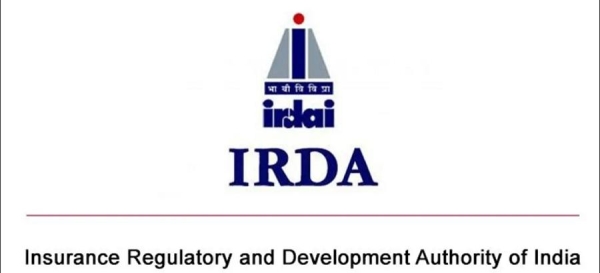


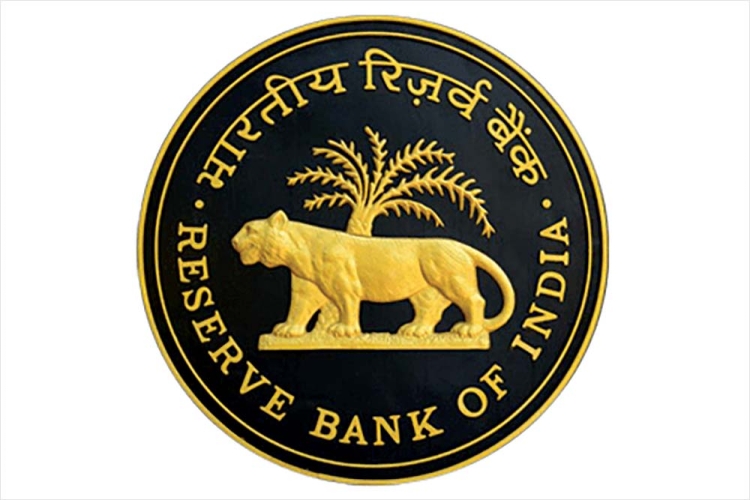
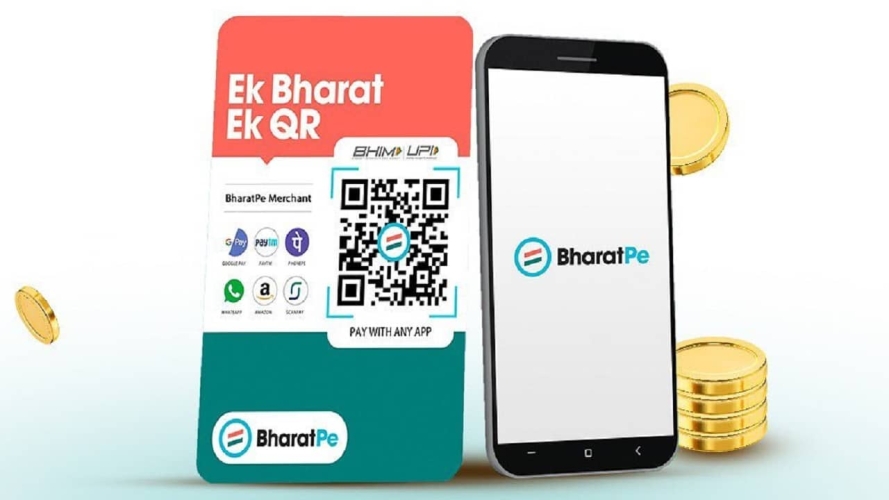

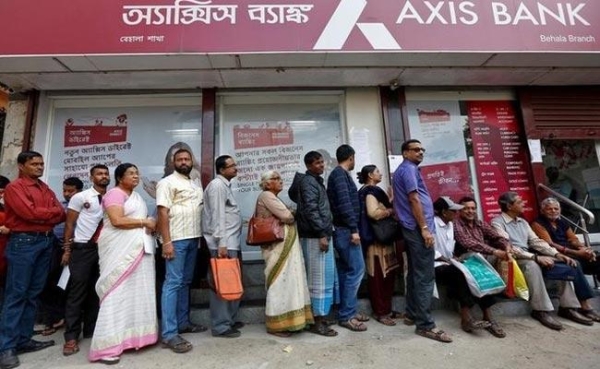
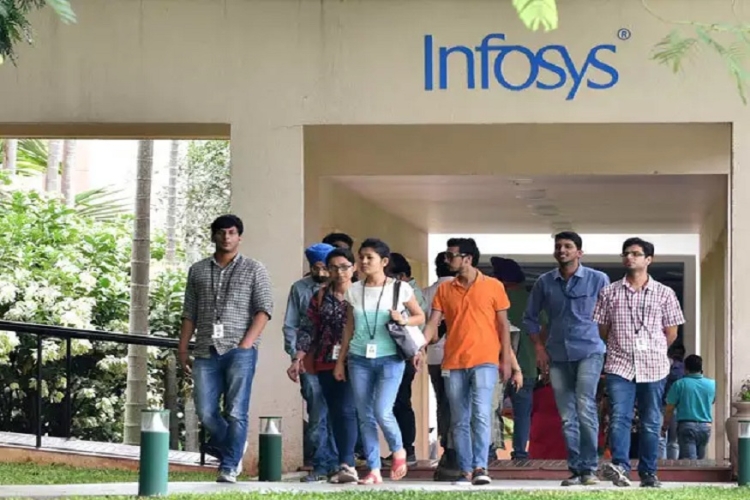
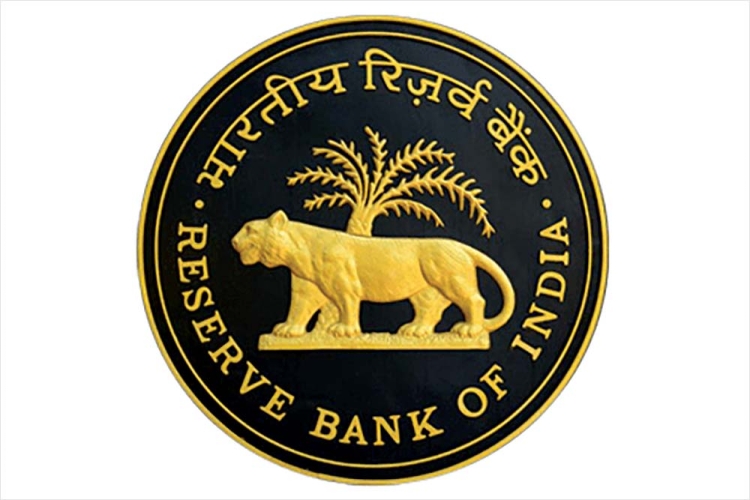
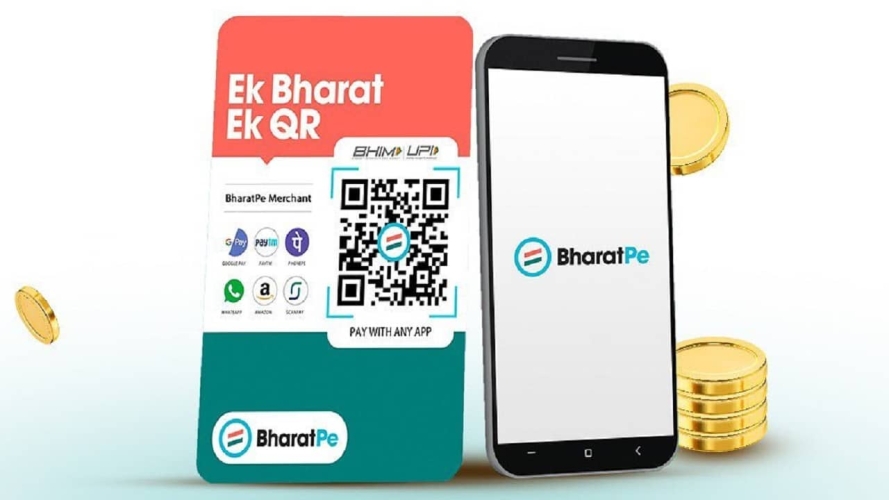
Mar 21 2024, 07:41
- Whatsapp
- Facebook
- Linkedin
- Google Plus
0